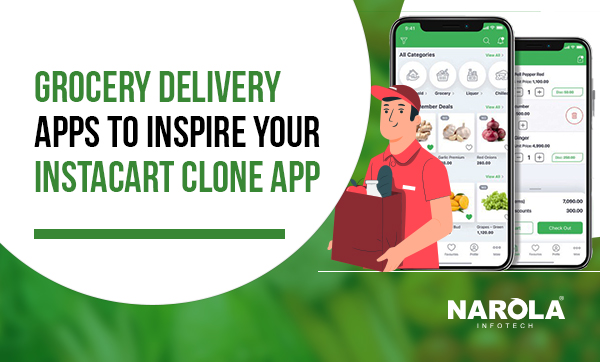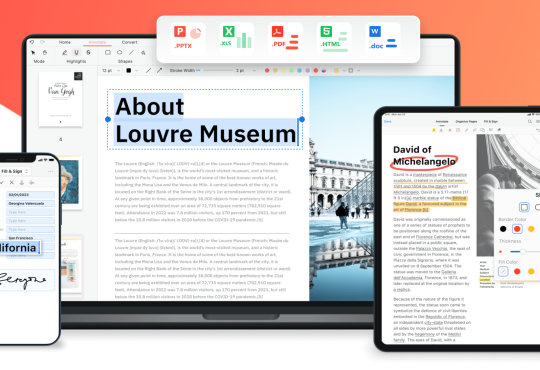Grocery Delivery Apps To Inspire Your Instacart Clone App

What are Grocery delivery apps? A grocery delivery app is software users can access to pick out their desired groceries, pay for them, and have them delivered directly to their doorstep. If modern times have taught us anything, it’s that people love convenience! This is the pressing reason why investors should take an interest in developing an Instacart like app.
For a businessman whose expertise is not tech-related, you may not know where to start and how to draft your idea. To give you a foundation, you can look at these on-demand grocery apps leading the grocery industry.
Which On-Demand Grocery Apps Can You Draw Inspiration From?
In order for your grocery delivery business to be better than the rest, you need to have features that will be popular among your users. Moreover, there is no better way to make this possible than to seek answers from existing businesses that are established and successful.
Here are 10 grocery delivery apps that are inspirational.
Instacart
If you plan on venturing into grocery delivery apps, your number one inspiration will be Instacart. The Instacart on-demand grocery delivery app sets the bar high for other apps competing with it. Apart from the seamless services it offers, there must be something else that contributes to its high success, right?
That is very true indeed! Instacart has tie-ups with various other US grocery store giants, Costco, Wholefoods, Safeway to name a few. Allowing its customers to compare prices and search availability of products from all the stores. But that’s not all!
Instacart has year-round discounts and promotions, allowing its users to save money from groceries on every order. If you take cues from Instacart, your Instacart clone is bound to be popular!
Postmates
Postmates operates a bit differently than other conventional on-demand grocery apps. You can order literally anything with delivery at your doorstep. This can be groceries, food, or even, supplies. A unique difference of Postmates is that it greatly affiliates itself to technology.
This app uses mobile device GPS and shows you what is available near your address. Each order will cost a minute delivery fee that is derived from the distance the delivery agent has to travel. Secondly, a pleasing feature of this app is that it is available 24/7!
Farmigo
The on-demand delivery app Farmigo is used to get fresh produce directly from farmers. Not only this, but the users can also order quality fruits, vegetables, snacks, and meat for the lowest prices. The on-demand app works well and the yearly revenue of US$3.5 million is proof everyone loves fresh produce!
Another fact that works for the Farmigo app are that it has a simple interface that anyone can easily use. This is good news since it means there are no restrictions applying to the age or usability of the app.
Amazon Fresh
Amazon is a name that needs no introduction! Adding a new service to its already impressive portfolio, Amazon is now venturing into grocery delivery. Until now, Amazon has not dealt in perishable items like vegetables but given the opportunity that awaits, it would be unthinkable to have not launched this service.
Amazon already has an efficient delivery system in place. So users can expect to have fruits, vegetables, canned food, meats, and other household items delivered rapidly with the Amazon Fresh grocery-delivery business.
The best part about Amazon Fresh is that Amazon Prime members can avail free delivery services! An order of less than $35 will attract a $10 fee, while some cities require a minimum order of $35. Likewise, you can apply delivery fees and minimum order values in your app.
FreshDirect
FreshDirect is one of those grocery service providers catering to health-conscious individuals. People who don’t mind paying a bit extra to make sure that what they are consuming is of the highest quality use this app.
The careful growing and sourcing from farms make the price of the products relatively higher. Each item comes with adequate information about its production and sourcing. While this is an advantage, there is a delivery delay since produce comes from the farms where it is grown.
Walmart Grocery delivery
Walmart is a giant in the grocery industry and a household name for families living in the USA. It came as a surprise when this supermarket chain announced that they were now starting a home delivery service.
The Walmart brand serves as motivation and inspiration for a range of stores and services, not just grocery delivery. For any business, established or startup, Walmart’s foray into the on-demand grocery industry definitely shows you why this feature is important for a business.
In the case of Walmart, it makes sense, and was only a matter of time before they made the connection!
Peapod
This Chicago-based on-demand app currently caters to 24 US state markets including major states like Washington and New York. The Peapod app even encourages its users to make a shopping list!
Peapod has some great algorithms in place. It allows users to make repeat orders, by looking at the past orders tab using the ‘Order Genius’ feature. This feature comes as a result of an in-depth analysis of customer needs and shopping habits.
The meal-kit feature enables shoppers to know exactly what they need to make a particular dish/meal. Meaning users will never fall short of that one ingredient again! Wouldn’t this be a pleasing feature to add to your Instacart clone?
Shipt
Operating in the USA, earning a revenue of $120 million per year is the grocery delivery app Shipt. This app boasts of around 50,000 shoppers and a strong partnership with grocery giants such as Costco, Target, Whole Foods, etc.
Uniquely, This app has a few features other apps don’t have but should. One of them being the ability to straight away take a look at the items that are on sale. Secondly, customers have the ability to request items from the store, even though they are not visible in the app.
An ideal Instacart business model should incorporate features like these in the app to make sure that users are really drawn to the app. As far as fees go, a monthly $15 applies or a yearly $399.
Safeway
Safeway grocery delivery services have an expansive network that runs throughout North America (Canada included). Composed of 1678 stores across the US and Canada, you can imagine the product inventory they must have!
Established decades ago (in 1915 to be exact), Safeway has figured out how to make an on-demand grocery delivery business work! In just a decade from its initiation, hundreds of more stores opened across the country.
The fact that Safeway is still around and thriving today is proof that this company finds a way to keep up with technology and user demands! Isn’t this inspiration enough for your app like Instacart?
Google Shopping (Formerly Google Express)
Google is taking an increasing interest in experimenting in other industries, grocery delivery apps are one such area of interest. Trust Google to make use of all types of technology for their grocery delivery services. Their services are similar to a ‘virtual mall’.
The Google Express app has been merged to give the Google shopping app which is a complete on-demand app with high capability. The app provides complete delivery of anything and everything, edible and non-edible!
How On-Demand Food Delivery Apps Are Operating Amid The Pandemic?
Conclusion
When it comes to developing your Instacart clone app, you won’t be short of ideas! There are several apps on which to draw inspiration and get all the information you need to draw up a completely sound Instacart business model.




